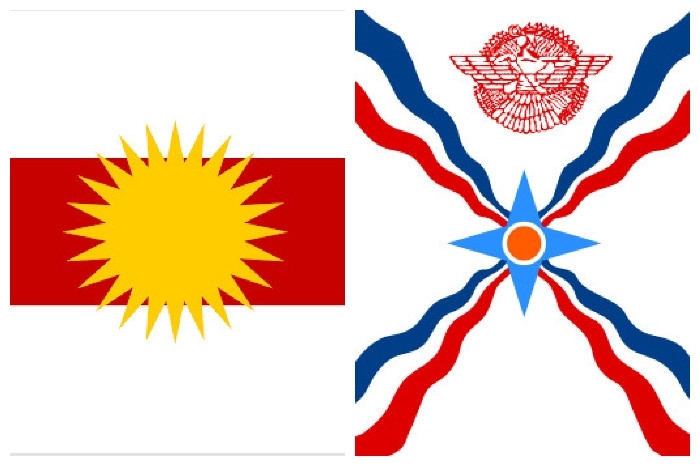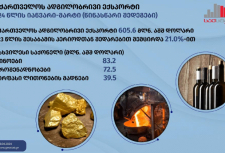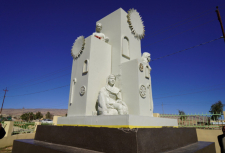Genetically, the closest people to the Yazidis were the Assyrians

Scientists have used genetic research to dispel the myth of the relationship between the Kurds and the Yazidis.
Genetically, the closest people were the Yazidis, the Assyrians. A genetic study was conducted in Iraq to find out which modern peoples of Iraq are closest to the indigenous inhabitants of Mesopotamia.
The fact that the Yazidis and Assyrians are genetically quite close is not surprising, since this study showed that the most genetically close to the ancient population of Mesopotamia are the Yazidis and Assyrians, and not the Kurds and Arabs. It is the Yazidis and Assyrians who are the indigenous inhabitants of Iraq (i.e., the indigenous inhabitants of Mesopotamia, Sumer, and Babylon)
It should also be noted that the genetic study involved 5 peoples, Yazidis, Assyrians, Kurds, Arabs, and Turkmens.
The most common haplogroups in Yazidis are R1b (20.79%), L (11.88%), and G2a / J2a1x J2a1b / h (10.89%). The most common haplogroups in Assyrians are R1b (30.23%), T (17.44%), and J2a1b (15.12%). The most common haplogroups in Kurds are J2a1b (20.20%), J1 / R1a (17.17%) and E1b1b (13.13%). The most common haplogroups in Arabs are J1 (38.61%), R1a (12.87%), and T (8.91%). The most common haplogroups in Turkmens are E1b1b (17.53%), J1 / J2a1b / R1a (12.37%), and G2a (10.31%).
Accordingly, from the above indicators: Yazidis and Assyrians have the most common haplogroup R1b, while it has almost the same haplotypes. In turn, the most common haplogroup among the Kurds is J2a1b, and the R1b halogroup is not visible at all among the Kurds.
Another remarkable fact is that haplogroup R1b is common not only among Yazidis and Assyrians, but also among Armenians. It is noteworthy that the territories of these three peoples border closely with each other.
Also, the UH of the Kurds and Arabs is very high. Among Kurds, it is (80.77%), among Arabs (78.83%), and among Yazidis and Assyrians, on the contrary, it is low, this may show the homogeneity of marriages among Yazidis and Assyrians.
In turn, the Kurds logically and cannot be close genetically to the ancient peoples of Mesopotamia, Babylon, and Sumer (as this study showed), since the Iraqi Kurds, and in general, like all Kurds, came to the territory of modern Iraq, Syria and Turkey through the Zagroz Mountains in Iran.
Today's Kurds of Iraq came from Iran not so long ago. This fact was repeatedly noted in the TV program "Vare kal u Bava" on the Lalish TV channel, the Turkish Kurds also mostly came from Iran, and settled the regions of the Yazidis, Assyrians, and Armenians in Turkey.
Naturally, if we conduct a genetic study of the Kurds of Turkey today, it will differ slightly from the genome of the Iraqi Kurds, since the most genetically pure Kurds are the Kurds of Iraq, since they recently migrated from Iran to Iraq. In turn, the Turkish Kurds have long migrated from Iran to Turkey. At the same time, the Turkish Kurds in large numbers assimilated the tribes of the Yazidis, Armenians, Assyrians, and other peoples of modern Turkey.
Kurds are among the indigenous people of Iraq, although there is no clear description of their exact origin. Turkmens, also known as Turkmens, mostly exist as a distinct minority outside the immediate southeastern borders of modern-day Turkey, through Northern Syria, Northern Iraq, and Northeastern Iran. The Iraqi Turkmen are the third largest ethnic group in the country and mainly live in the territory stretching from the northwest to the southeast of Iraq, including the provinces of Mosul, Erbil and Kirkuk.
The Yazidis are an ethno-religious group, mainly inhabiting Northern Syria and Northern Iraq. A distinctive feature of the Yazidis among other Mesopotamian peoples is their religion, Sharfadin, which is related to the ancient Mesopotamian religions.
Official source: https://www.ncbi.nlm.nih.gov/pmc/articles/PMC5669434/
Yezidis ☼ Yezidstan
Tags: #yazidis #yezidis #ezidi
Genetically, the closest people to the Yazidis were the Assyrians

Scientists have used genetic research to dispel the myth of the relationship between the Kurds and the Yazidis.
Genetically, the closest people were the Yazidis, the Assyrians. A genetic study was conducted in Iraq to find out which modern peoples of Iraq are closest to the indigenous inhabitants of Mesopotamia.
The fact that the Yazidis and Assyrians are genetically quite close is not surprising, since this study showed that the most genetically close to the ancient population of Mesopotamia are the Yazidis and Assyrians, and not the Kurds and Arabs. It is the Yazidis and Assyrians who are the indigenous inhabitants of Iraq (i.e., the indigenous inhabitants of Mesopotamia, Sumer, and Babylon)
It should also be noted that the genetic study involved 5 peoples, Yazidis, Assyrians, Kurds, Arabs, and Turkmens.
The most common haplogroups in Yazidis are R1b (20.79%), L (11.88%), and G2a / J2a1x J2a1b / h (10.89%). The most common haplogroups in Assyrians are R1b (30.23%), T (17.44%), and J2a1b (15.12%). The most common haplogroups in Kurds are J2a1b (20.20%), J1 / R1a (17.17%) and E1b1b (13.13%). The most common haplogroups in Arabs are J1 (38.61%), R1a (12.87%), and T (8.91%). The most common haplogroups in Turkmens are E1b1b (17.53%), J1 / J2a1b / R1a (12.37%), and G2a (10.31%).
Accordingly, from the above indicators: Yazidis and Assyrians have the most common haplogroup R1b, while it has almost the same haplotypes. In turn, the most common haplogroup among the Kurds is J2a1b, and the R1b halogroup is not visible at all among the Kurds.
Another remarkable fact is that haplogroup R1b is common not only among Yazidis and Assyrians, but also among Armenians. It is noteworthy that the territories of these three peoples border closely with each other.
Also, the UH of the Kurds and Arabs is very high. Among Kurds, it is (80.77%), among Arabs (78.83%), and among Yazidis and Assyrians, on the contrary, it is low, this may show the homogeneity of marriages among Yazidis and Assyrians.
In turn, the Kurds logically and cannot be close genetically to the ancient peoples of Mesopotamia, Babylon, and Sumer (as this study showed), since the Iraqi Kurds, and in general, like all Kurds, came to the territory of modern Iraq, Syria and Turkey through the Zagroz Mountains in Iran.
Today's Kurds of Iraq came from Iran not so long ago. This fact was repeatedly noted in the TV program "Vare kal u Bava" on the Lalish TV channel, the Turkish Kurds also mostly came from Iran, and settled the regions of the Yazidis, Assyrians, and Armenians in Turkey.
Naturally, if we conduct a genetic study of the Kurds of Turkey today, it will differ slightly from the genome of the Iraqi Kurds, since the most genetically pure Kurds are the Kurds of Iraq, since they recently migrated from Iran to Iraq. In turn, the Turkish Kurds have long migrated from Iran to Turkey. At the same time, the Turkish Kurds in large numbers assimilated the tribes of the Yazidis, Armenians, Assyrians, and other peoples of modern Turkey.
Kurds are among the indigenous people of Iraq, although there is no clear description of their exact origin. Turkmens, also known as Turkmens, mostly exist as a distinct minority outside the immediate southeastern borders of modern-day Turkey, through Northern Syria, Northern Iraq, and Northeastern Iran. The Iraqi Turkmen are the third largest ethnic group in the country and mainly live in the territory stretching from the northwest to the southeast of Iraq, including the provinces of Mosul, Erbil and Kirkuk.
The Yazidis are an ethno-religious group, mainly inhabiting Northern Syria and Northern Iraq. A distinctive feature of the Yazidis among other Mesopotamian peoples is their religion, Sharfadin, which is related to the ancient Mesopotamian religions.
Official source: https://www.ncbi.nlm.nih.gov/pmc/articles/PMC5669434/
Yezidis ☼ Yezidstan
Tags: #yazidis #yezidis #ezidi

























